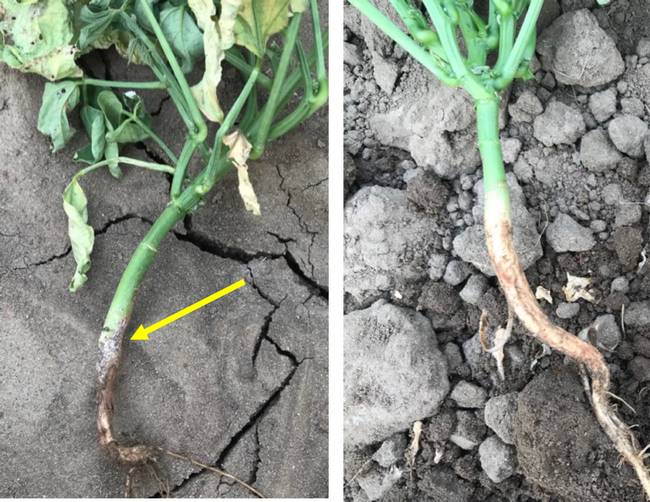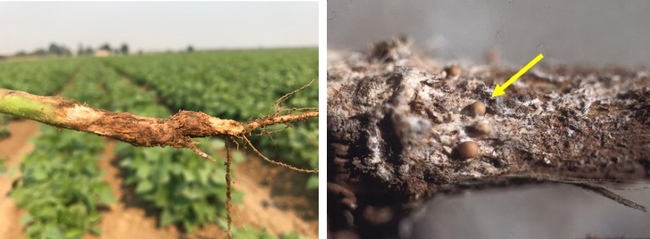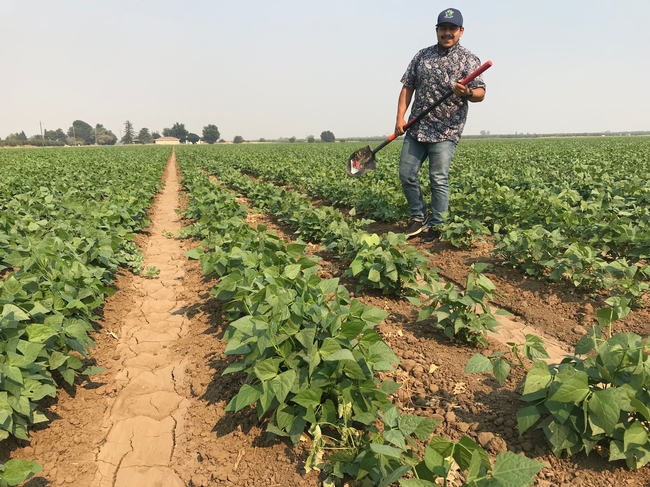A baby lima bean field in the Sacramento Valley was recently found to be infected with southern blight (Sclerotium rolfsii), a fungal pathogen that's found in many crops. The field was double-cropped with barley and planted late June.
Symptoms and signs: Initial symptoms of southern blight include a yellowing of the foliage with a slight darkening of the stem, just above the soil line. Lesions rapidly develop, girdling the stem, causing sudden and permanent wilt of the plant. The fungus grows downward in the stem, causing rot. White mats of mycelium develop on the stem and nearby soil. In a few days, tan to brown spherical sclerotia (tiny compact masses of hardened fungal mycelium) may appear on the fungal mat. If present, these are a good diagnostic feature of this disease.
Comments on the disease: Southern blight is usually a minor disease of beans and other crops in California. However, high temperatures above 85°F together with high moisture favor the disease. High summertime temperatures combined with a later planting date likely stressed the young lima plants in this field, making them more susceptible to this disease. The best time to plant baby limas in the Sacramento Valley is around the third week in May; for large limas it's early May. Last year was a big year for southern blight in many crops, likely due to late plantings and high heat stressing the plants. This year the disease seems to be a little less common, but is still widely detected on many crops, from Kern to Sutter counties. Detections in the northern counties of the central valley have become more frequent in the last three weeks.
Disease Management: The fungus attacks a wide range of plants and survives for a long time in the soil as sclerotia. Rotations are not considered effective since this pathogen has over 500 hosts. However, it is thought that rotations to corn or small grains for at least 2 years may reduce inoculum; studies are underway to determine whether these rotations are effective. For most crops, southern blight resistant cultivars are not available. However, for vegetable crops such as tomatoes, there are some rootstocks reported to be resistant to southern blight, which are currently under study in field trials in California. Discing and burying plant refuse helps destroy sclerotia.


